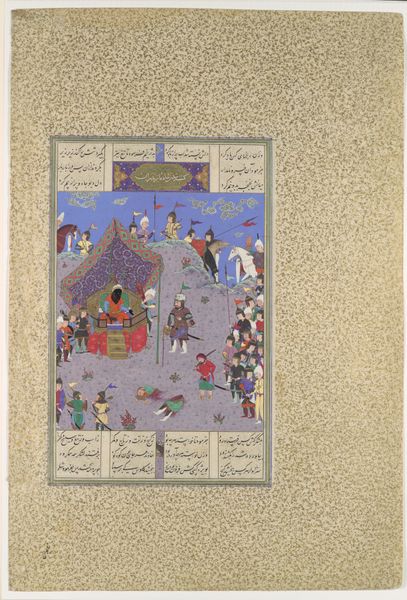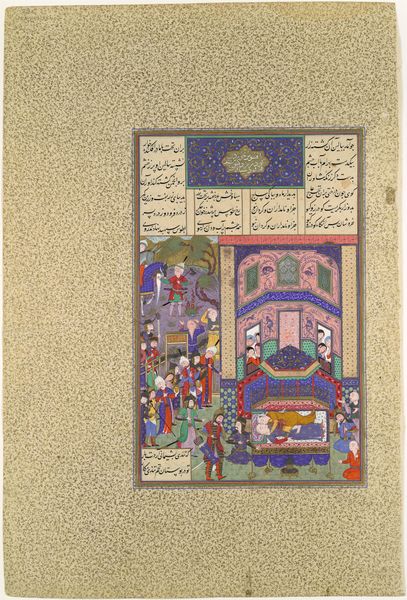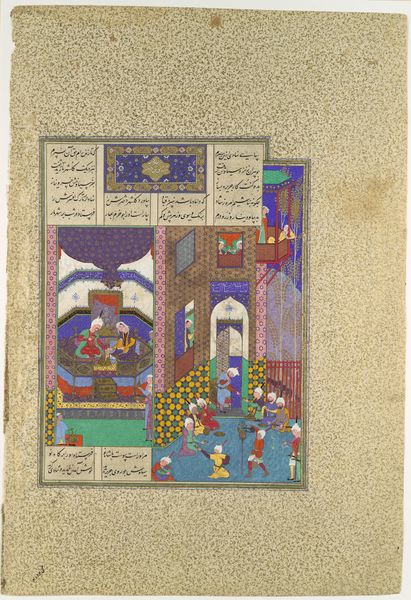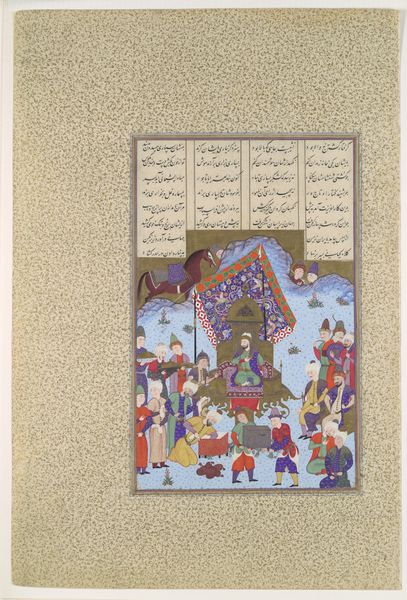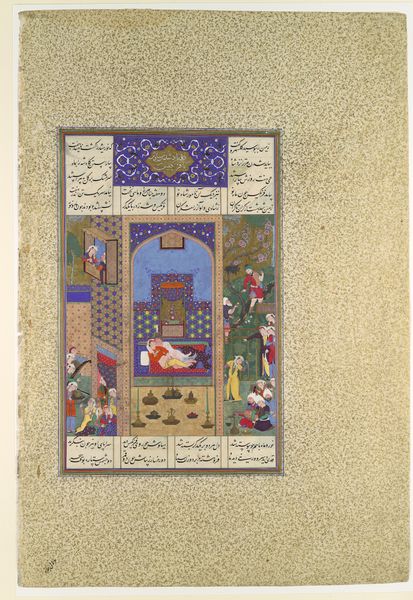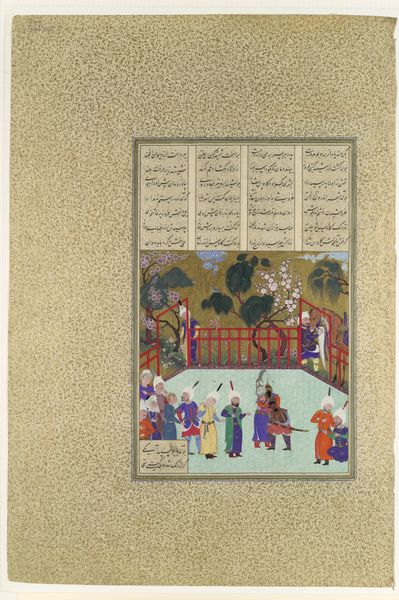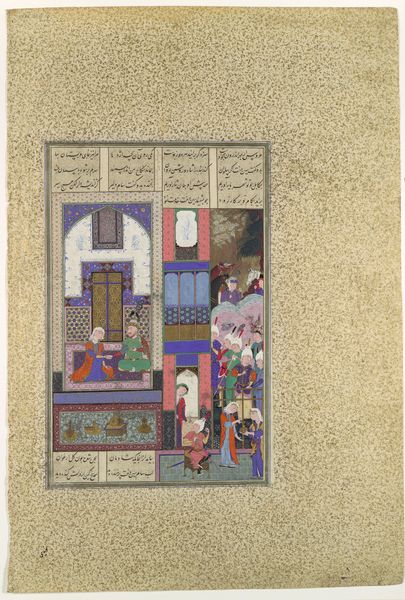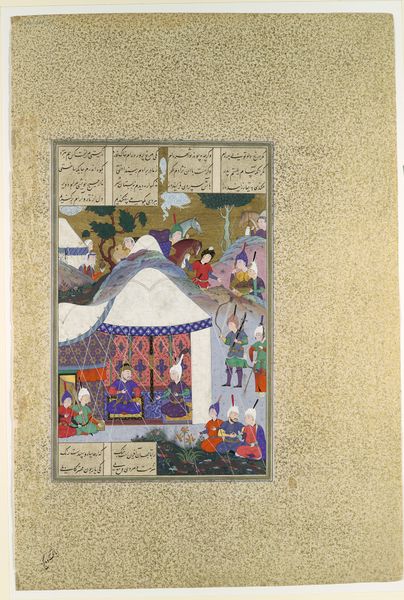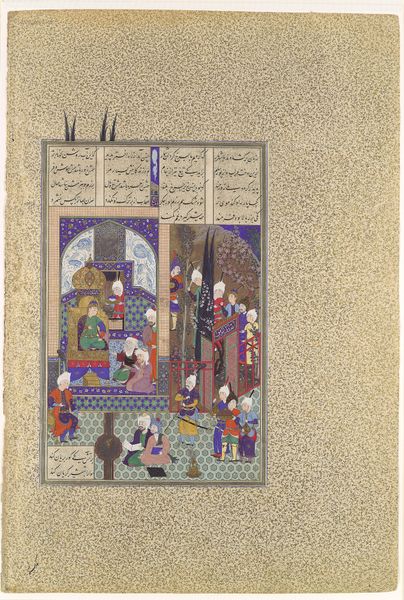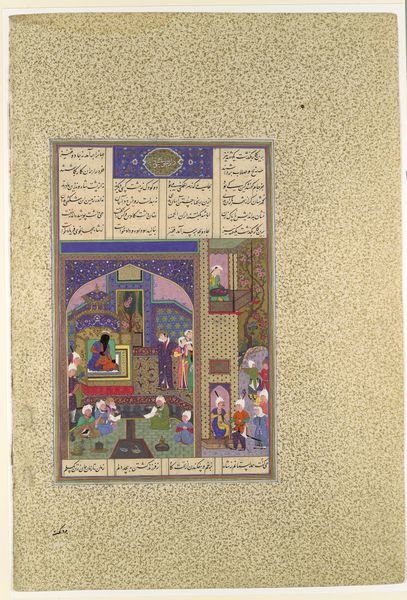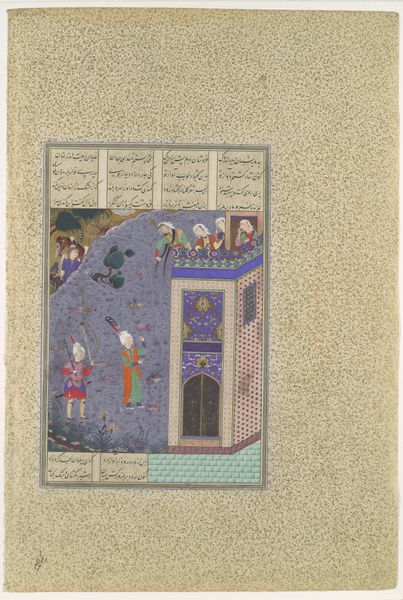
"Kai Kavus Upbraids Siyavush in a Letter", Folio 174r from the Shahnama (Book of Kings) of Shah Tahmasp 1500 - 1555
0:00
0:00
tempera, painting
#
narrative-art
#
tempera
#
painting
#
figuration
#
islamic-art
#
miniature
Dimensions: Painting: H. 11 in. (28 cm) W. 7 3/16 in. (18.3 cm) Page: H. 18 5/8 in .(47.3 cm) W. 11 11/16 in. (29.7 cm) Mat: H. 22 in. (55.9 cm) W. 16 in. (40.6 cm)
Copyright: Public Domain
Editor: This tempera and ink miniature painting, "Kai Kavus Upbraids Siyavush in a Letter", is from the Shahnama, or Book of Kings, created between 1500 and 1555. It is just packed with people inside of a really visually intriguing structure, how would you describe it from an art expert’s perspective? Curator: Focusing on the pictorial construction, we see a deliberate layering of forms, beginning with the flat, decorative plane of the foreground and then rising into the implied space of the chamber. Consider how the architectonic details – the tiling, the window openings – operate less as realistic depth cues and more as elements in a complex pattern. Editor: I see what you mean about the layering, like it isn't naturally realistic. Is there something more you can unpack? Curator: Note how the figures, while individualized through color and gesture, are essentially types. Their placement around the king creates a formal rhythm. Each is rendered with a crisp outline that underscores their presence. Ask yourself: what compositional purpose do their groupings serve? Are they merely decorative elements? Editor: No, it looks like the eye is immediately drawn towards the elevated King figure and is balanced by the colors within. Now that I think about it, this is why it holds visual interest. Curator: Precisely. The work excels through the carefully orchestrated juxtaposition of colours, the linear treatment of forms, and the surface tension produced by these elements. It creates a composition that resonates formally. Editor: Thank you. Now I appreciate how much intention is in the structural composition of the miniature and not so much of what it literally illustrates. Curator: Yes, by prioritizing the image’s formal elements, such as structure, balance, rhythm and symmetry, we avoid interpreting a potentially limiting historical context.
Comments
No comments
Be the first to comment and join the conversation on the ultimate creative platform.

